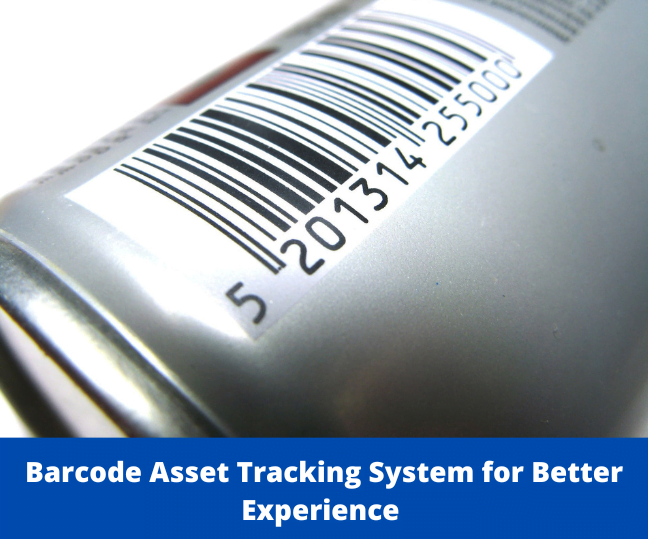Introduction
In today’s technology-driven business landscape, the effective management of hardware assets plays a crucial role in optimizing operational efficiency, reducing costs, and mitigating risks. Hardware Asset Management (HAM) refers to the systematic approach of tracking, monitoring, and managing physical assets throughout their lifecycle. To streamline and enhance this process, businesses are increasingly turning to hardware asset management software. In this blog, we will explore the benefits of using such software, the key features it offers, the basic components of a hardware asset management system, the processes involved in implementing an effective system, understanding different asset types and their categories, identifying best practices for asset management, and evaluating the need for hardware asset management solutions.
Benefits of Using Hardware Asset Management Software
Hardware asset management software brings numerous benefits to businesses, aiding in cost control, optimizing asset management processes, and increasing operational efficiency. By providing full visibility into the IT inventory, this software enables businesses to make informed decisions, streamline procedures, and avoid unnecessary expenses. It offers real-time information on assets, facilitating efficient asset utilization and reducing overhead costs. Moreover, it helps in recording warranty information, maintenance status, contract agreements, and licensing compliance, thereby mitigating risks associated with asset knowledge gaps and preventing asset theft.
Efficient Cost Control
One of the significant benefits of using hardware asset management software is the ability to exercise precise control over costs. By accurately tracking assets, organizations can identify unnecessary expenses related to hardware acquisition, maintenance, and disposal. The software enables businesses to streamline procurement processes, negotiate better contracts, and make informed decisions regarding asset utilization. With a clear view of the IT inventory, organizations can avoid unnecessary purchases, optimize resource allocation, and reduce costs associated with underutilized or redundant assets.
Streamlined Asset Management Processes
Hardware asset management software simplifies and streamlines the overall asset management processes. It provides a centralized platform where organizations can efficiently track and manage their hardware assets. From acquisition to disposal, the software allows businesses to record and monitor critical information, including asset details, ownership, warranties, and maintenance schedules. By automating these processes, organizations can reduce administrative overheads, minimize manual errors, and ensure data accuracy.
Enhanced Operational Efficiency
Efficient asset management contributes to improved operational efficiency. Hardware asset management software provides organizations with real-time visibility into their IT inventory, allowing them to track assets, monitor performance, and plan for future needs effectively. By having a clear understanding of asset availability, location, and utilization, businesses can optimize resource allocation, prevent asset shortages or overstocking, and reduce downtime. This leads to improved productivity, streamlined operations, and better service delivery.
Risk Mitigation
Hardware asset management software plays a vital role in mitigating risks associated with asset management. By accurately recording warranty information, maintenance status, and contract agreements, organizations can ensure timely repairs and replacements, reducing the risk of asset failures and disruptions. Additionally, the software helps organizations maintain licensing compliance by tracking license renewals and usage, preventing legal issues and penalties. By actively monitoring assets and ensuring compliance, businesses can safeguard their operations, protect their reputation, and maintain a secure IT environment.
Asset Knowledge and Security
Maintaining accurate and up-to-date asset information is crucial for businesses, particularly in terms of security. Hardware asset management software enables organizations to track the location, ownership, and usage of assets, reducing the risk of asset theft and unauthorized access. By maintaining a comprehensive inventory and monitoring asset movements, businesses can quickly identify any discrepancies or potential security breaches. The software also allows organizations to track software installations and licenses, ensuring compliance and protecting against potential legal issues.
Improved Decision-Making
Hardware asset management software provides businesses with valuable insights and data for informed decision-making. By analyzing asset data and performance metrics, organizations can identify trends, patterns, and areas for improvement. The software helps businesses identify underutilized assets, plan for upgrades or replacements, and optimize asset lifecycles. With accurate and up-to-date asset information, businesses can allocate resources effectively, make strategic purchasing decisions, and optimize their IT infrastructure.
Features of Hardware Asset Management Software
The key features of hardware asset management software are essential for managing the complete lifecycle of hardware assets and ensuring optimal utilization. This software allows organizations to track and manage the inventory of physical devices, including laptops, desktops, and servers. Asset tagging, ownership assignment, and maintenance tracking functionalities help in identifying and monitoring assets efficiently. Additionally, features like location tracking, warranty information recording, contract agreement tracking, and license compliance renewal management contribute to effective asset management. Proactive purchase decision-making and optimized asset utilization further reduce overhead costs.
Accurate Asset Tracking and Inventory Management
Hardware asset management software provides organizations with a comprehensive and accurate view of their asset inventory. By utilizing asset tracking features, businesses can easily locate and monitor the status of hardware assets. This includes information such as asset location, user assignment, and maintenance history. The software facilitates efficient inventory management by automatically updating asset records, reducing manual effort, and improving data accuracy. Accurate asset tracking helps prevent loss or theft, enables timely maintenance and repairs, and ensures compliance with contractual obligations.
Contract and Warranty Management
Managing contracts and warranties is a critical aspect of hardware asset management. Hardware asset management software allows organizations to record and track contract agreements, warranty information, and service level agreements (SLAs). By centralizing this information, businesses can proactively manage contract renewals, track warranty expirations, and ensure compliance with vendor agreements. This feature helps organizations optimize vendor relationships, avoid unnecessary expenses, and plan for future hardware upgrades or replacements.
License Compliance and Renewal

Software licenses are valuable assets that require careful management to ensure compliance and avoid legal issues. Hardware asset management software provides functionality for tracking and managing software licenses, including license details, usage rights, and renewal dates. By keeping a record of licenses and monitoring usage, organizations can ensure compliance with software agreements, optimize license allocation, and avoid penalties associated with non-compliance. This feature helps businesses maintain control over their software assets and avoid costly legal complications.
Understanding the Basics of Hardware Asset Management Software
Hardware asset management software comprises various components that work together to ensure efficient tracking, monitoring, and management of physical assets throughout their lifecycle. Each component plays a vital role in asset management and optimizing the IT environment.
The Components of a Hardware Asset Management System:
- Asset Discovery: Asset discovery is the initial step in the hardware asset management process. It involves identifying and documenting all hardware assets within the organization’s IT infrastructure. This component helps create a centralized database of assets, enabling organizations to have a comprehensive view of their hardware inventory.
- Asset Inventory: Asset inventory involves recording and cataloging hardware assets, including detailed information such as asset type, specifications, purchase details, and ownership. The asset inventory component allows organizations to maintain accurate and up-to-date asset records, facilitating efficient asset tracking and management.
- Asset Tracking: Asset tracking enables organizations to monitor the movement and location of hardware assets. It involves assigning unique identifiers or tags to assets and recording their current status and location. This component provides real-time visibility into asset whereabouts, aiding in asset retrieval, utilization tracking, and preventing loss or theft.
- IT Resource Management: IT resource management involves optimizing the allocation and utilization of hardware assets. This component helps organizations monitor asset usage, identify underutilized or overutilized assets, and plan for resource optimization. By understanding asset utilization patterns, businesses can make informed decisions regarding asset deployment and retirement.
- Contract Management: Contract management involves tracking and managing contractual agreements related to hardware assets, including vendor contracts, service level agreements, and lease agreements. This component ensures organizations comply with contractual obligations, proactively manage contract renewals, and optimize vendor relationships.
The Processes and Procedures Involved in Implementing an Effective System
Implementing an effective hardware asset management system requires following specific processes and procedures to ensure accurate asset tracking and management.
- Centralized Database Setup: The first step involves setting up a centralized database to store and manage hardware asset information. This database serves as a repository for all asset-related data, including asset details, ownership information, warranty details, and maintenance records.
- Hardware Asset Labels: Hardware asset labels play a crucial role in asset identification and tracking. Each asset should be assigned a unique label or identifier that can be easily scanned or recorded. These labels should include essential information such as asset name, serial number, and ownership details.
- Asset Audit: Conducting regular asset audits is essential to ensure data accuracy and identify redundant assets. An asset audit involves physically verifying assets against the records in the database, updating asset information, and identifying any discrepancies or missing assets. This process helps maintain accurate asset records and identifies assets that are no longer required or are underutilized.
- Asset Management Policy: Establishing a comprehensive asset management policy is crucial for effective asset management. This policy should define asset ownership, outline procedures for asset acquisition, tracking, maintenance, and disposal, and establish guidelines for regulatory compliance. Regular policy reviews and updates are necessary to adapt to changing business needs and technology advancements.
Understanding the Different Types of Assets and Their Categories
To effectively manage assets, organizations need to understand the different types of assets they must track and their respective categories.
- Physical Assets: Physical assets include tangible assets that organizations own, such as inventory, equipment, vehicles, and infrastructure. These assets have a physical presence and can be directly measured or observed.
- Digital Assets: Digital assets encompass software applications, licenses, subscriptions, and other digital resources. These assets are intangible and require careful management to ensure compliance, optimize usage, and avoid unauthorized access.

- Financial Assets: Financial assets include accounts, investments, loans, and other financial instruments. While not directly related to hardware assets, managing financial assets is essential for maintaining accurate financial records and optimizing financial planning.
- Intangible Assets: Intangible assets refer to non-physical assets, such as patents, trademarks, copyrights, and intellectual property. These assets hold significant value for organizations and require appropriate management to protect their rights and maximize their potential.
- Asset Categories: Assets can be categorized into various categories based on their nature and purpose. Common categories include current assets (short-term assets), fixed assets (long-term assets), and long-term assets (assets with a longer useful life).
Identifying the Best Practices for Managing Your Assets
To optimize asset management workflows, organizations should adopt best practices that ensure efficient utilization and maximize value.
- Clear Processes: Defining clear processes for asset acquisition, tracking, maintenance, and disposal is crucial. Documented procedures provide guidelines for employees, enhance accountability, and ensure consistent asset management practices.
- Automation Tools: Leveraging automation tools and technology simplifies asset management tasks. Automated asset tracking, inventory management, and reporting streamline processes, minimize manual errors, and improve overall efficiency.
- Data Analytics: Utilizing data analytics capabilities allows organizations to gain valuable insights into asset performance, utilization trends, and cost optimization opportunities. By analyzing data, businesses can make informed decisions and identify areas for improvement.
- Monitoring and Reporting: Implementing robust monitoring and reporting mechanisms helps organizations track asset utilization, identify bottlenecks, and monitor compliance. Real-time reporting enables proactive decision-making and timely actions to optimize asset management.
- Regulatory Compliance: Ensuring regulatory compliance is critical for organizations. Adhering to industry standards, licensing agreements, and legal requirements helps mitigate risks, avoid penalties, and maintain a positive reputation.
Evaluating Your Organization’s Need for Hardware Asset Management Solutions
When considering the need for hardware asset management solutions, organizations should evaluate several key factors. The benefits of tracking assets, reducing costs, and mitigating risks should be assessed to understand the potential impact on the business. The size of the infrastructure, industry type, regulatory requirements, and the number of employees requiring access to hardware assets are critical considerations. Additionally, determining whether it is necessary to manage hardware assets throughout their entire lifecycle, from procurement to disposal, is crucial for making informed decisions regarding the implementation of hardware asset management solutions.
- Infrastructure Size: The size of the infrastructure, including the number of hardware assets, is a crucial factor. Larger infrastructures with a wide range of assets require robust asset management solutions to maintain control and efficiency.
- Industry Type: Different industries have unique asset management requirements. Consider industry-specific regulations, compliance standards, and security needs when evaluating hardware asset management solutions.
- Regulatory Requirements: Compliance with regulatory requirements is vital. Certain industries, such as healthcare or finance, have strict regulations regarding data security, asset tracking, and privacy. Ensure the chosen solution meets these requirements.


















